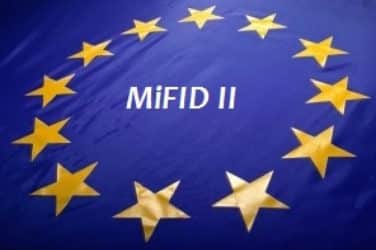Has the largest independent financial regulator in the U.S. lost its way?
Is it time that the Financial Industry Regulatory Authority, a private corporation, go back to basics and as it oversees the fairness and honesty of U.S. financial markets? With the regulator preparing to install a new chief executive officer, the question of how FINRA conducts itself is a timely one.
The Origin of the Species
FINRA started its existence as the successor to the National Association of Securities Dealers and the member regulation, enforcement and arbitration operations of the New York Stock Exchange. The merger was approved by the U.S. Securities and Exchange Commission in July 2007.
The NASD was founded in 1939 and was registered with the SEC in response to the 1938 Maloney Act amendments to the Securities Exchange Act of 1934, which allowed it to supervise the conduct of its members subject to the oversight of the SEC. In 1971, NASD launched a new computerized stock trading system called the National Association of Securities Dealers Automated Quotations stock market. The NYSE and AMEX stock exchanges merged in 1998. Two years later, the Nasdaq underwent a major recapitalization and became an independent entity. In July 2007, the SEC approved the formation of a new SRO to be a successor to NASD. The NASD and the member regulation, enforcement and arbitration functions of the New York Stock Exchange were then consolidated into the Financial Industry Regulatory Authority.
FINRA is a non-governmental, not-for-profit organization that regulates member brokerage firms and exchange markets. The government agency which acts as the ultimate regulator of the securities industry, including FINRA, is the SEC.
The Financial Industry Regulatory Authority is the largest independent regulator for all securities firms doing business in the U.S. FINRA’s mission, as stated, is to protect investors by making sure the securities industry operates fairly and honestly. FINRA oversees more than 3,900 brokerage firms, about 162,000 branch offices and 640,000 registered securities representatives.
FINRA regulates trading in equities, corporate bonds, securities futures, and options. All firms dealing in securities that are not regulated by another SRO, such as by the Municipal Securities Rulemaking Board (MSRB), are required to be FINRA members.
FINRA has approximately 3,600 employees and operates from Washington, D.C, New York, and 16 regional offices around the country.
According to Ray Pellecchia, FINRA spokesman, the SRO’s mission is focused on two goals: investor protection and market integrity. Pellecchia said it is dedicated to investor protection and market integrity through effective and efficient regulation and complementary compliance and technology-based services.
FINRA touches virtually every aspect of the securities business – from registering and educating all industry participants to examining securities firms, writing rules, enforcing those rules and the federal securities laws, and informing and educating the investing public. In addition, FINRA provides surveillance and other regulatory services for equities and options markets, as well as trade reporting and other industry utilities. FINRA also administers the largest dispute resolution forum for investors and firms.
A very broad range of responsibilities to be sure. And in looking at some of the statements made by outgoing FINRA president, Richard Ketchum, in his 2016 Regulatory and Examination Priorities Letter, the SRO was going to focus on three more issues – supervision; risk management and controls; and liquidity. Ketchum’s letter also emphasized it wanted to look at member firm’s cultures, conflicts of interest and ethics.
This past May at the FINRA annual conference, Ketchum said the regulator would focus on broker culture issues and how they impact the marketplace. FINRA has supported a “best interests of the customer” standard for a number of years, and Ketchum believes that examining corporate culture would be central in getting a glimpse into how brokers serve a customer’s best interests.
“It is the direction we must go. And we must get it right,” Ketchum said.
Going forward, FINRA also wants to focus on data analytics as a tool to help it address poor culture and compliance breakdowns.
Power Grab
That’s a lot of governance. And usurped power for a non-government agency, according to several market sources.
“So FINRA, in essence, is really the finance god of our markets,” said James Angel, associate professor of finance at the McDonough School of Business at Georgetown University. “But should it be?”
Angel told Markets Media that he thought now it is time for a review of the SRO’s mandate and perhaps scale it back as to make the SRO a more effective regulator. “As Robert Cook prepares to take over the reins there maybe now is the best time to stop and ask the question, has FINRA strayed from its original purpose to where it is now? Is it time to hit the reset button and fix what’s wrong at FINRA to get her back to her original charter mandates?”
Angel and others, said that with Cook beginning his tenure as FINRA’s president and chief executive officer on August 15, this could be the perfect time to examine the regulator.
Cook is no stranger to the financial markets or regulation. He comes from Cleary Gottlieb Steen & Hamilton LLP, where he has served as a partner in the firm’s Washington, DC, office since June 2013. While at Cleary Gottlieb, he has focused on the regulation of securities markets and market intermediaries, including broker-dealers, exchanges, alternative trading systems and clearing agencies. Prior to joining Cleary Gottlieb, Cook served as the director of the Division of Trading and Markets of the SEC from 2010 to 2013. Under his direction, he ran the review of equity market structure and its analysis of the ‘flash crash’ of May 6, 2010. Prior to joining the SEC, Cook served as a partner at Cleary Gottlieb since 2001, after joining the firm in 1992.
Requests by Markets Media to interview Cook to see what his focus for FINRA were declined.
But traders voiced their opinions.
One trader told Markets Media that FINRA has assumed a “larger than life” role now as a result of the SEC’s inability to formally regulate the entire financial market system. The SEC, he said, was simply too small and too underfunded to effectively oversee such a large marketplace.
“It’s not hard to see how we got here,” the trader said. “So the SEC kind of deals with the real big-ticket stuff and FINRA covers everything else. And there’s a lot of everything else.”
Another trader at a New Jersey-based broker-dealer said that the while the SEC has legislative oversight for FINRA, it was hard for the government agency to impose its own will with the SRO. This is because public employees typically make smaller salaries and often don’t want to jeopardize future job prospects — with FINRA.
“It’s so funny the way it works,” the trader began. “You go and get experience in regulation by working at the SEC for a few years. Then when you want to get paid you jump right over to FINRA. Makes you wonder about the whole regulatory system’s design.”
De-Regulate the Regulator?
Georgetown’s Angel made similar remarks. He proposed that the SEC focus on one part of market regulation – such as the broker-dealers. FINRA could watch another part of the marketplace, such as the exchanges. Add a third group could watch the individual brokers. These smaller regulators would then report to one umbrella, or ‘uber’ regulator.
“So yeah there are a lot of questions here, having to do with FINRA. And I think it’s time for a reexamination, “Angel said. “What should they be regulating? How should they be funded? How should they be governed?”
More on Regulation:
- New Regs Weaken Research-Trading Link
- Buyside Surprised by Bank of England Measures
- Courts Wade Into Virtual Currencies
<






